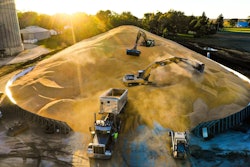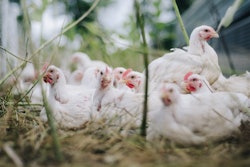
The Wall Street Journal’s Janet Adamy and Paul Overberg recently published an article titled Rural America Is the New ‘Inner City’ that looked at the current state of rural communities alongside their counterparts. The article found rural counties coming in last for many of the socioeconomic factors used to evaluate a community’s health. The article talks about poor infrastructure, towns where the death rate doubles that of the birth rate, opportunities from the internet that never arrived and the lack of workers with college-level degrees. Overall, the article paints a dire picture for the health and labor force in the communities where most grain handlers and feed manufacturers call home. The situation in rural America underscores a problem that is currently a headache for managers and may one day unsettle the industry — where do we find workers that will bring our industry into the future?
Negative unemployment
The exact labor demographics for the grain handling and feed manufacturing industries are hard to come by. The United States Department of Agriculture and U.S. Bureau of Labor Statistics focus more on overall rural labor rates, which show higher unemployment rates in rural communities than their urban counterparts (5.4% compared to 4.8% according to the USDA Economic Research Service). But that only shows part of the story. Dan Simmons, owner of Ocean View, DE-based Continental Search, a recruitment company that serves the feed industry, has observed that when it comes to skilled jobs that require a degree or several years’ experience, the industry is facing negative unemployment, where there are not enough people to fill the jobs that are available.
“It used to be that we would recruit someone and they would have their job and maybe our job and one other,” says Simmons. “Or we would show them two jobs. Today, top candidates have four or five job offers to look at.”
Simmons is not alone in the struggle to recruit employees such as nutritionists, sales representatives, facility managers and other mid-level management; other recruiters and feed and grain companies are struggling.
“The positions that require some knowledge of education beyond high school, those are the ones that we’re going to have the tough time finding enough people for,” Michael Smith, president and CEO, Ag1Source, a recruitment company based in Hesston, KS. “It’s simply because it’s not very well known what kinds of jobs are out there, what the jobs are like and what the future demand is going to be.”
According to recruitment experts, this is not a new problem, just one not often discussed. But with the nation’s economy now recovering, the issue will continue.
“We were faced with a shortage of people in key positions even with a national unemployment at 8%,” explains Smith. “It’s worse in rural areas where a lot of the agricultural employment is. In those areas, the availability of a bachelor’s graduate needed to handle some of these skilled positions was tight even back when we had unemployment of well above 8%.”
The low unemployment means grain elevators and feed manufacturers have to compete to find employees at low levels as well, in what is often considered an undesirable field.
“The area that we’re in has a very, very low unemployment rate, and when you look at a feed mill or a hog operation or a dairy operation, they’re really not the most glamorous jobs in the world, when you get right down to it,” said Dale Yunginger, director of production at Standard Nutrition Services, located in Omaha, NE. “There are dirty parts of it; there are days when it’s so hot or cold in the area you’re working in you can hardly believe it. In the mind-set of the people in the labor market right now, agriculture probably isn’t on the top of their list of what they want to do for a career.”
Unlike other industries, the work is hands-on and requires a physical presence. This takes away the option of recruiting from the more abundant urban labor pool or someone from across the country unless the person is willing to relocate, a less likely option now than in the past.
“Most mills and most grain facilities are very rural,” says Smith. “They need people where the work is; you can’t telecommute to this job; you have to relocate there. That need is a challenge because new generations just aren’t as willing to relocate as older generations used to be.”
Nothing in the middle
Mid-level management and similar positions that require experience in the field are some of the hardest to find. Simmons describes his experience of walking through industry trade shows.
“There are the those under 30, who are worried about paying off their student loans. There are those over 55, worried about funding their 401(k) plans,” says Simmons. “There’s a small group of suppliers in the middle.”
Smith agrees and has seen it throughout the country.
“Go into any rural country grain elevator, and you’re going to find quite a few people that are probably within five to 10 years of retirement. You’re going to find several that are early in their career,” says Smith. “There’s a missing age group in agriculture — the 35 to 50 age range. Most of the facilities across the U.S. are experiencing this.”
Yunginger has experienced it at his locations.
“Agriculture, in general, is facing a labor problem,” says Yunginger. “We’re associated with some large dairies, and we’re associated with some large swine operations. We’ve got eight feed mills around the country, and it’s the same everywhere you go. Everybody is struggling to find and keep good people.”
With the Baby Boomer generation retiring and a drought of people that have been in the industry for the 10 to 20 years that companies want, Smith has noticed that the industry has been forced to make exceptions.
“We’ve got some fairly experienced millennials that are being pushed into management positions, in some cases before they have had as much training as what some of these businesses want, but it’s happening,” explained Smith.
What happened to the group that would have one day filled the vacancies left by the Boomers? Simmons and Smith both have ideas on what happened to this missing generation.
“Compensation has not stayed competitive with what someone is worth in the market, not with what other feed companies will pay, but what someone can earn if they move into other parts of allied industries,” says Simmons. “For instance, talent moves to veterinary animal health, biotech, finance, or being an independent nutritionist because the feed manufacturers have not kept pace with what people can earn in related industries. They continue to lose people who are in their 30s and 40s to these other industries.”
“Part of it is back in the early ’80s through the early ’90s when farm life was not very good. It wasn’t very productive,” says Smith. “A lot of parents and grandparents told their kids to go find something else, go get educated in something, but agriculture and farming right now is not the place ‘for you.’ They not only went off and found education in something else, but they actually left agriculture, period.”
Recruitment
The question for a grain handler, feed manufacturer, cooperative and allied industry managers is how do I overcome the trends and hire the best people possible for my company. Relocating, rural areas and hard work can be downsides when recruiting, but those in the industry that do it right make sure to explain the benefits of joining their organizations and are honest about what the future of the job entails.
“We offer stability,” explains Yunginger. “If they do a good job, they’re going to have a job for 20, 30 years. You don’t climb a ladder in our company but your work gets rewarded. We lay that in front of them right upfront. This is the type of job it’s going to be, and your title is probably going to be mill worker for the biggest share of your career.”
Finding the right people for the job is more important than their background. Investing in the right people and teaching them how to fit into your organization will pay dividends in the future.
“Not only do you have to hire them right, you have to make sure we’re onboarding them right, “explains Becky Pertzborn, employee services manager for Vita Plus Corporation, based in Madison, WI. “Design onboarding programs that can adapt to someone with or without a farm background. Adapting your method will help keep that employee and really give them the opportunity to be a long-term employee.”
The key to recruiting in the modern agricultural labor market is to find the right people no matter what their background and train them. Successful recruiters will look outside of traditional sources for the right employee.
“There are more veterans coming into the industry, especially at our facilities,” says Pertzborn. “If asked where to find the help I’ll say, ‘Check out the veterans group,’ because they are highly skilled, committed, hard-working people and they have fit very well at our operations.”
Keeping the best
Recruiting the right person is only half of the problem. The more difficult task is getting an employee to stay once they are part of the team. Simmons has a list of what it takes to keep an employee for three years, at which point they are more likely to remain at the company for the long term.
“To get people to stay beyond the three-year mark, you need to be competitive and pay them to what they are worth in the market,” Simmons explains. “You have to provide them with the opportunity to have a fulfilling career, you have to keep them current with advancements in the industry, and you need to provide them the tools and resources to be successful.”
Engagement, recognition and good benefits will reduce turnover and help turn a new employee into a lifelong asset.
“Firms that are embracing the most modern of equipment, and computer software are going to be a lot more attractive,” notes Smith. “This has as much to do with keeping an employee engaged in an operation as the company’s compensation program. Things that are non compensation factors can still be of high value to an employee.”
“Recognition motivates,” says Yunginger. “We have several different programs for recognition, including a QC program and a stakeholders program and we consider all of those parts of our benefits package. With retaining new employees the real problem we have is that benefit package has less meaning. A new employee is looking for money in their pocket. We have a stakeholders program, QC bonus, true profit sharing, 401(k) matching, health insurance, dental, vision and the whole ball of wax, but you’ve still got to get that employee out there in the three- to five-year range before you start getting credit for those benefits.”
One option to filling mid-level positions along with keeping employees is to invest in the talent already working at the plant.
“Vita Plus has always been very supportive of employees that are here,” explains Alan Gunderson, vice president at Vita Plus.” If an employee came and said, ’Gee, I think I could do a better job, or if I knew more about this it would help me in my job,’ we’ve always been, when do you start? What can we do? That’s not easy because when somebody is gone, then somebody else has to pick up the slack. But it does pay off in the long run, helping people get that extra education, being supportive of their desires to grow and everybody understanding that we’ll pitch in to do that if it’s something that can help. It’s an important attribute overall of making employees feel that this is a place where if they’ve got an idea it will be heard. If they think that something’s wrong, they feel like they can go talk to someone about it and they can make a difference.”
The challenge of our time
Government regulations, trade, the economy and safety justifiably get a lot of attention in the industry, but the ability to recruit and train the next generation of employees may end many of the facilities operating today.
“The feed companies who are in business in the 2030s will fall into one of three categories,” predicts Simmons. “They will be integrated like the poultry industry or the swine industry. They will be toll mills who work for independent consultants. Or they will have figured out how to recruit, train, retain, pay, incentivize and lead a great workforce.”
Though the situation may be dire for some, there is a step that can be taken now to find the right employees and to make sure there are enough in the future.
“Unless businesses or industry groups actually go and recruit students to go through the programs that schools are offering that are needed to go into this field, we’re going to have a tough time finding enough people that are trained,” says Smith. “I don’t think the lack of the ability to train will hurt the industry. What will, is the lack of knowledge by both the industry and potential employees on what kind of jobs are out there, what the jobs are like and what the future demand is going to be.”
.jpg?auto=format%2Ccompress&crop=faces&fit=crop&h=48&q=70&w=48)

















